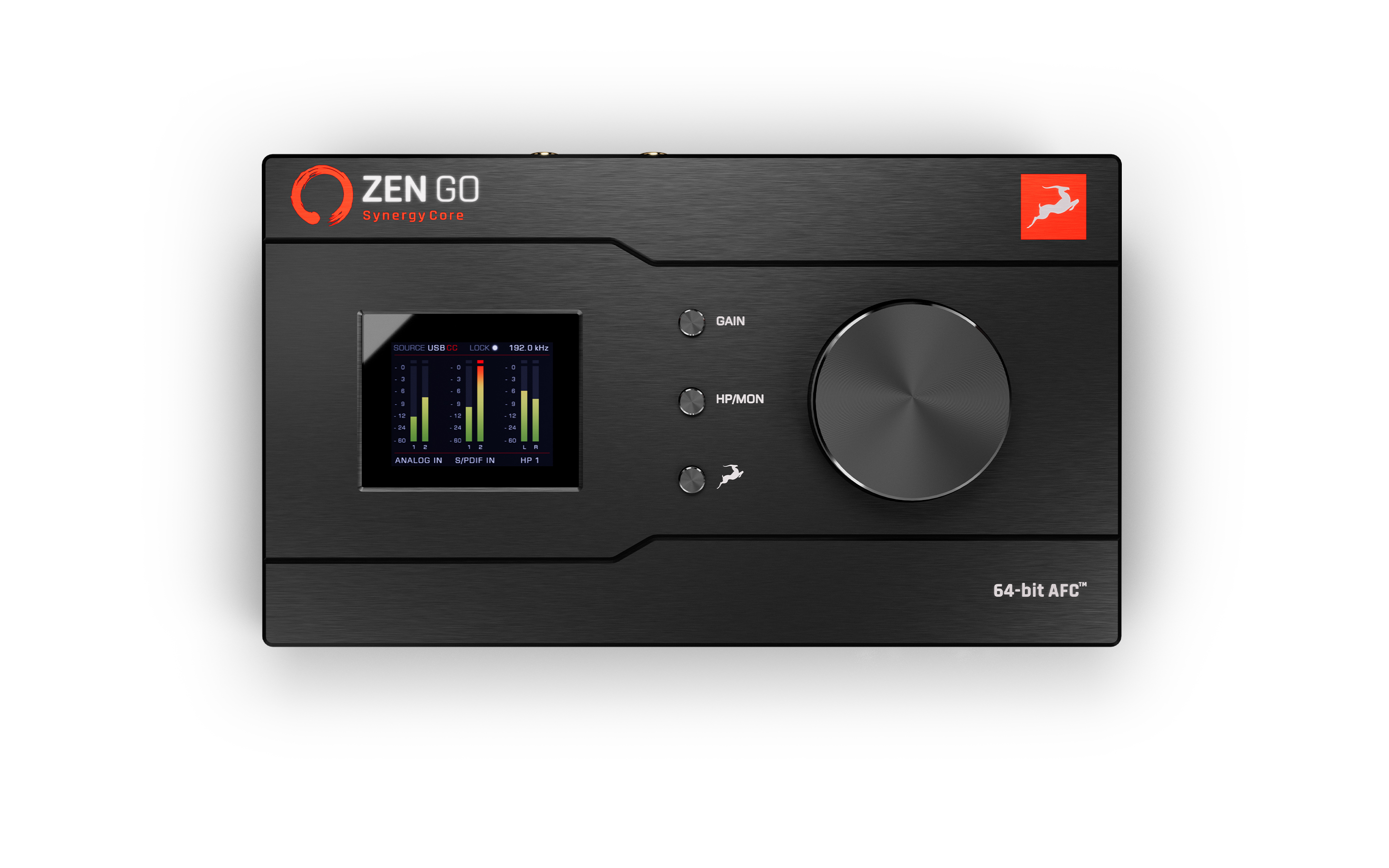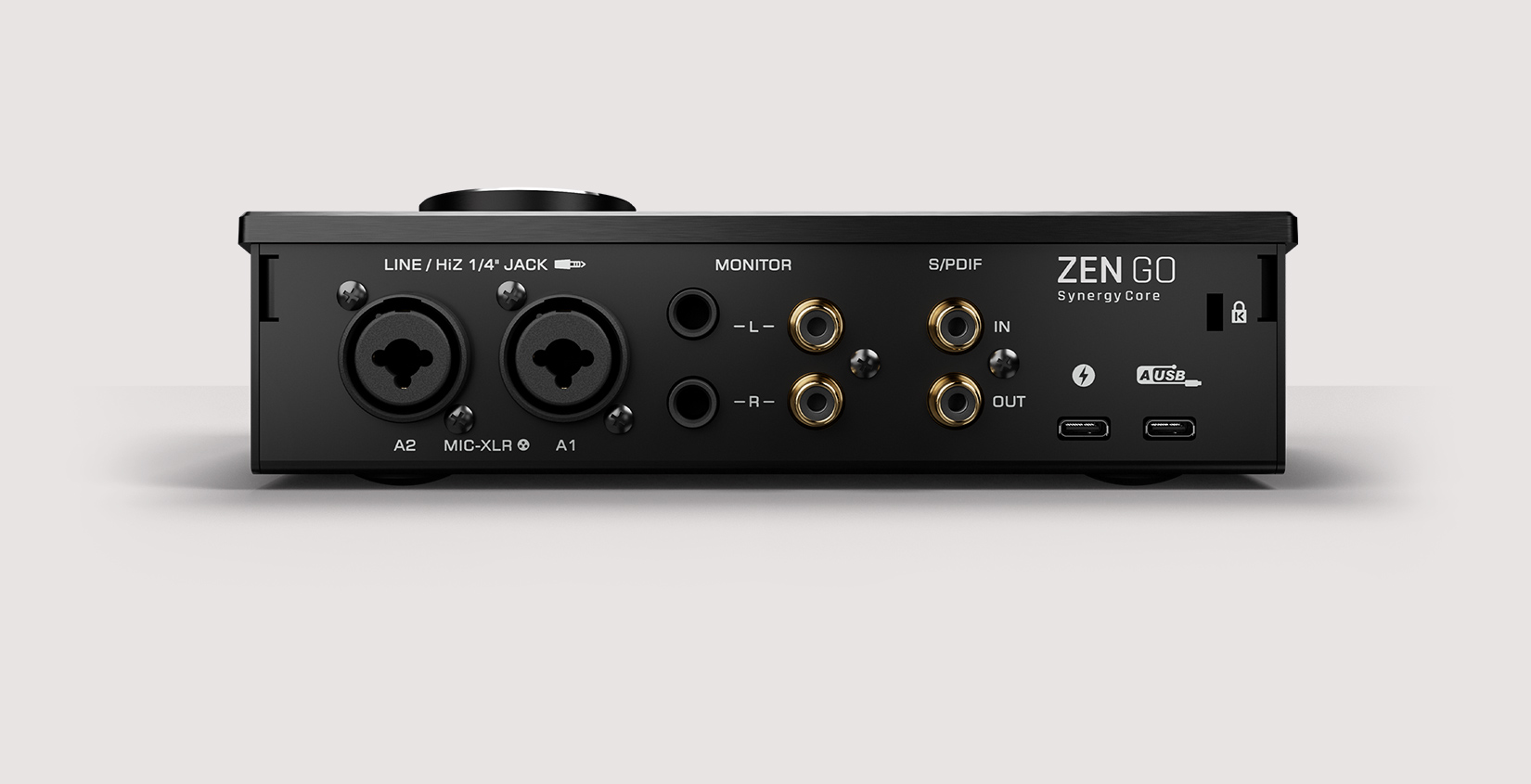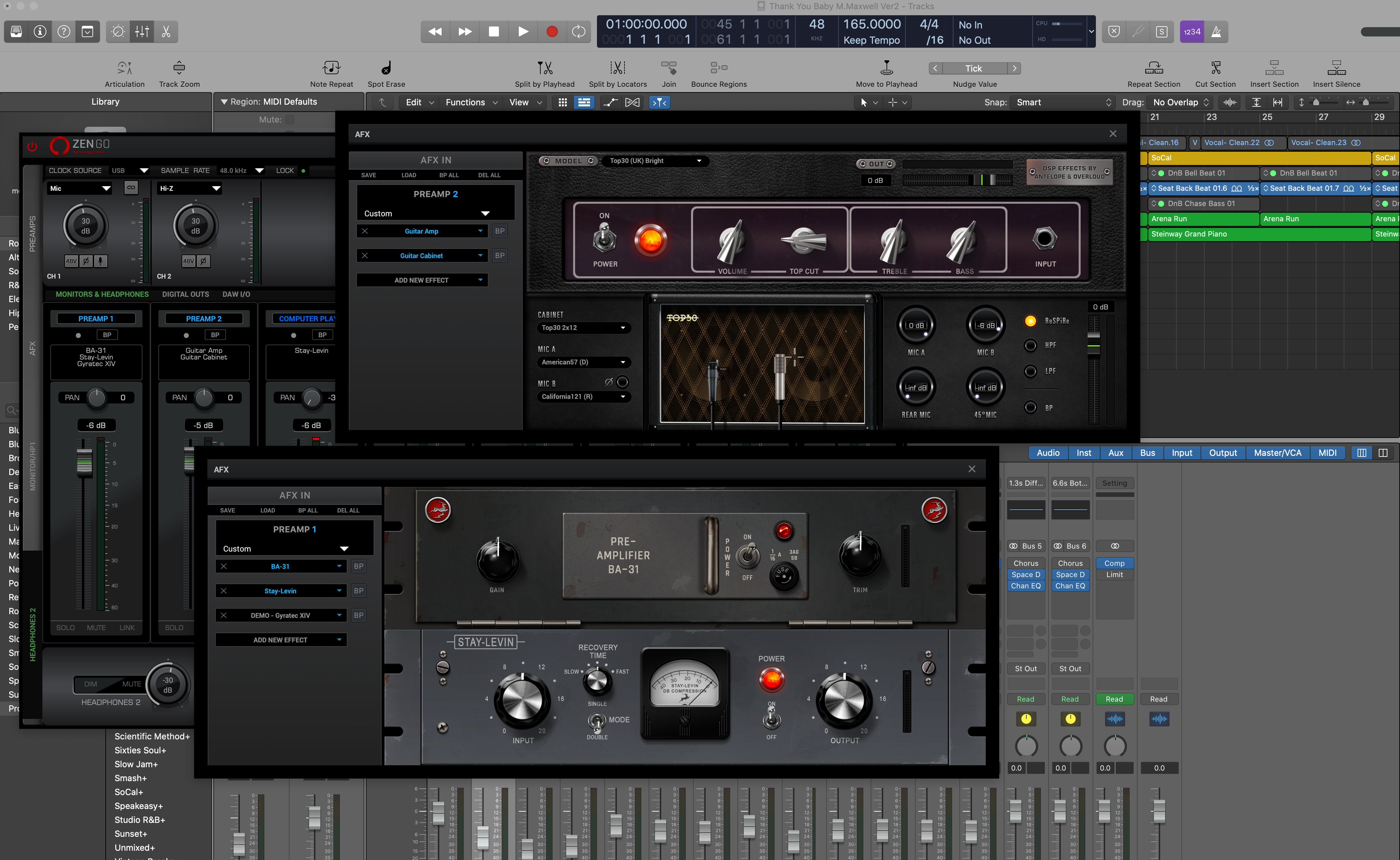Antelope Audio has long been associated with the more professional end of the market when it comes to audio interfaces and clocking: superb sound quality, multiple I/O options, FPGA processing, and sophisticated mic modelling are some of the features which have set the brand apart from the competition. The company has introduced a new compact interface that at £449 or less is half the price of its previous entry level interface, the Discrete 4 Synergy Core. So what has been sacrificed (if anything) to accommodate that kind of cost-effectiveness?
The Zen Go Synergy Core (ZGSC for ease of ID) is a bit like a baby Zen Tour Synergy Core, a desktop interface which has been available for around three years now but with a smaller desktop footprint and reduced I/O. The front panel features a large rotary control which in isolation controls the amount of monitor level to your speakers, and when you press it, mutes the output signals. If you press and hold it for a second or so it will also dim and then undim the signal.
When you press the small gain control once, it selects the first mic preamp; and twice, the second. Pressing the rotary with either mic pre moves between mic/line and instrument HiZ, and turning the rotary adjusts the input gain level. The middle of the three switches assigns either of the two headphone outputs, and main monitor output to the rotary. And pressing the little Antelope button exits you from the gain and monitor function but leaves whichever monitor output that you last selected assigned to the rotary.
The rear panel features two combination XLR/TRS jack inputs, two pairs of parallel outputs for monitoring - one on phonos, the other on balanced TRS jacks. There are stereo S/PDIF in and out and two USB-C connections - one to link to your computer, and one for additional bus power should you be using a laptop.
On the front there are two large ¼-inch independent stereo headphone sockets; the front panel also mentions the 64-bit AFC (Acoustically Focused Clocking) jitter management technology, supporting sample rates up to 24-bit/192 kHz. This is the same technology which is shared throughout the Antelope range in everything from their Goliath HD and Orion 32HD, and now the ZGSC.
What this ultimately means is, before you even load Antelope Audio’s accompanying Synergy Core software suite - and providing you have a Mac - you have a functioning USB interface straight out of the box. And not just any USB interface; this one sounds stunning, every bit the pedigree of Antelope’s high-end studio interfaces.







